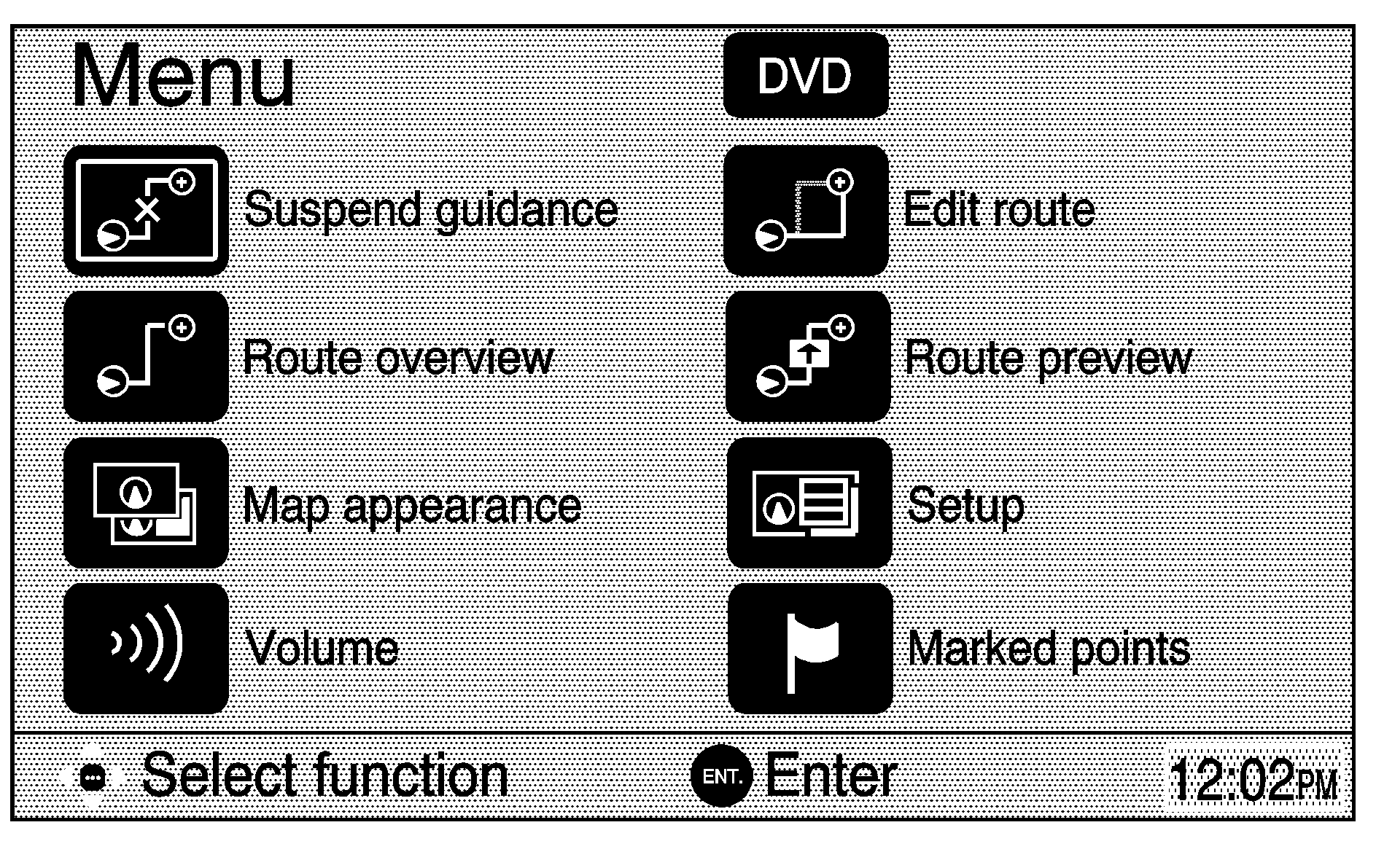
The main navigation menu allows you to choose from an itemized list of options
or to use the multi-function keys to make adjustments to the system and plan routes.
You will be able to choose from the following list of items on the main navigation
menu:
These keys are also available:
The following are the options available from the Navigation Menu Display.
Suspend Guidance
When this function is selected, the current navigation route will be canceled.
The highlighted route will no longer be highlighted and you will no longer receive
voice prompts for navigation. The map can still be viewed by pressing the MAP key.
Route Overview
Selecting route overview will show the map with the route highlighted. The total
distance and estimated driving time are also displayed.
Volume
This system has voice guidance prompts that provide various messages as you
approach an intersection, or other points where you need to maneuver the vehicle.
You can adjust the volume of the voice prompts or turn off voice guidance. Press
the MENU key to display the screen, and select the Volume button. The Volume screen
allows you to increase or decrease the volume from 1 to 7 or if you
do not need voice guidance, to select Off. If you select Adaptive volume control,
the volume is turned up automatically when the vehicle speed exceeds 50 mph
(80 km/hr).
DVD Information
Selecting DVD will display the information for the current navigation database
disc.
Edit Route
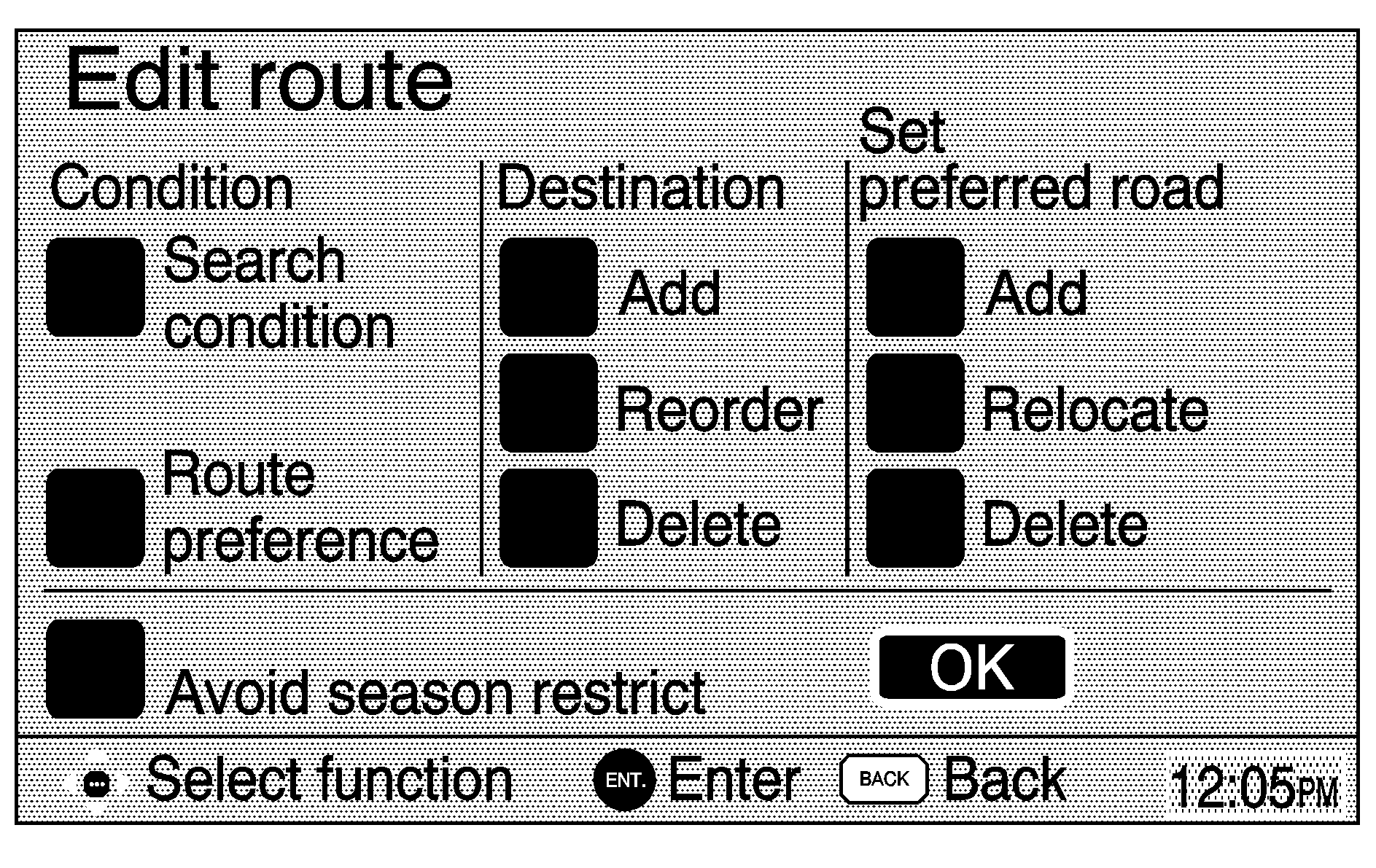
This function allows you to reroute based on preferences. You can also add,
reorder or delete destinations and adjust road preference settings.
Route Preview
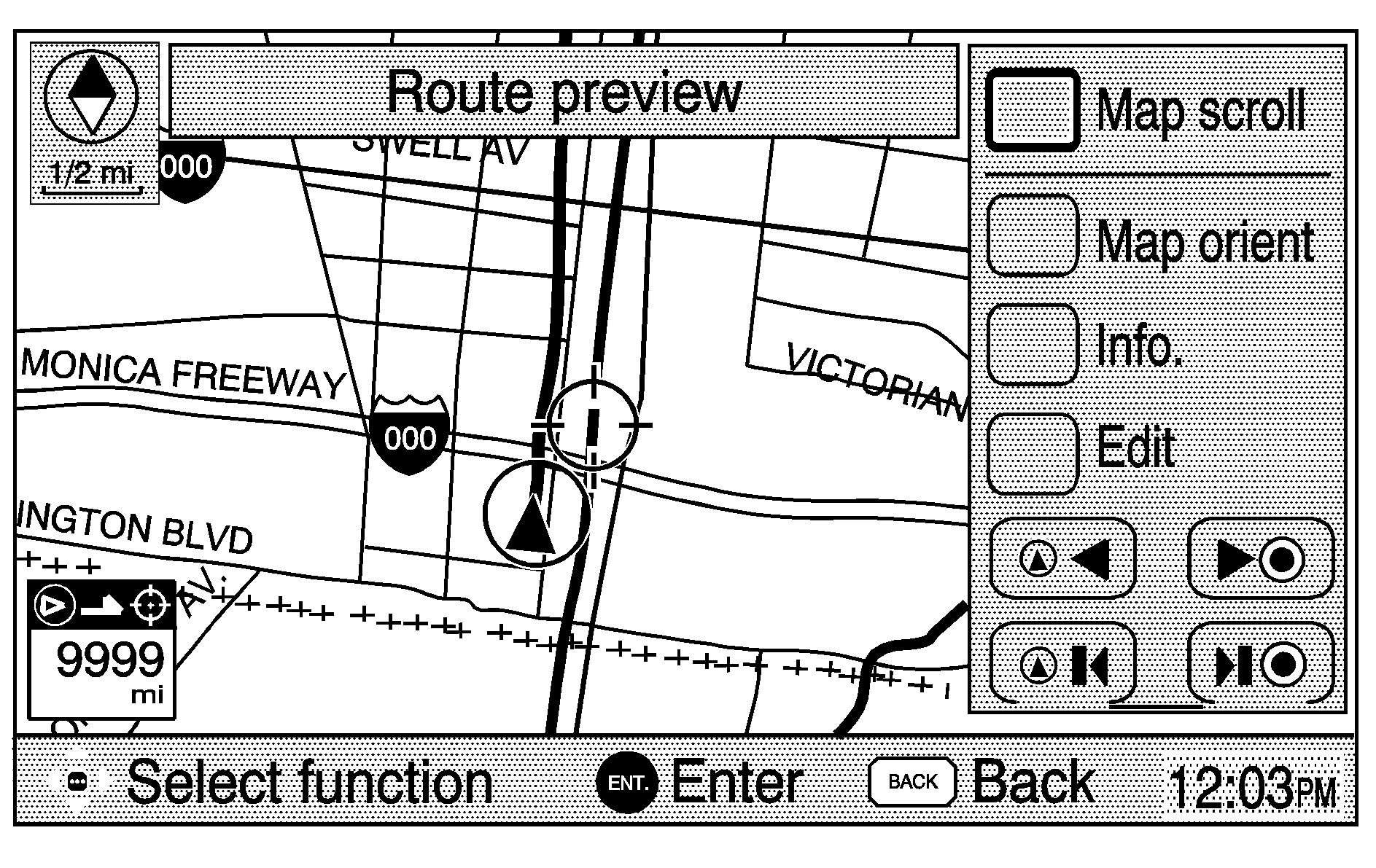
Selecting route preview from the MENU screen displays the map screen with the
route highlighted. The total mileage traveled and drive time is also displayed. The
route is traced by the vehicle icon. You can preview the route from the starting position
to the destination or from the destination to the starting position.
Setup
Selecting this function displays the Setup menu. From the Setup menu several
options may be adjusted or turned on and off. See
Screen Setup
for
more information.
Marked Points
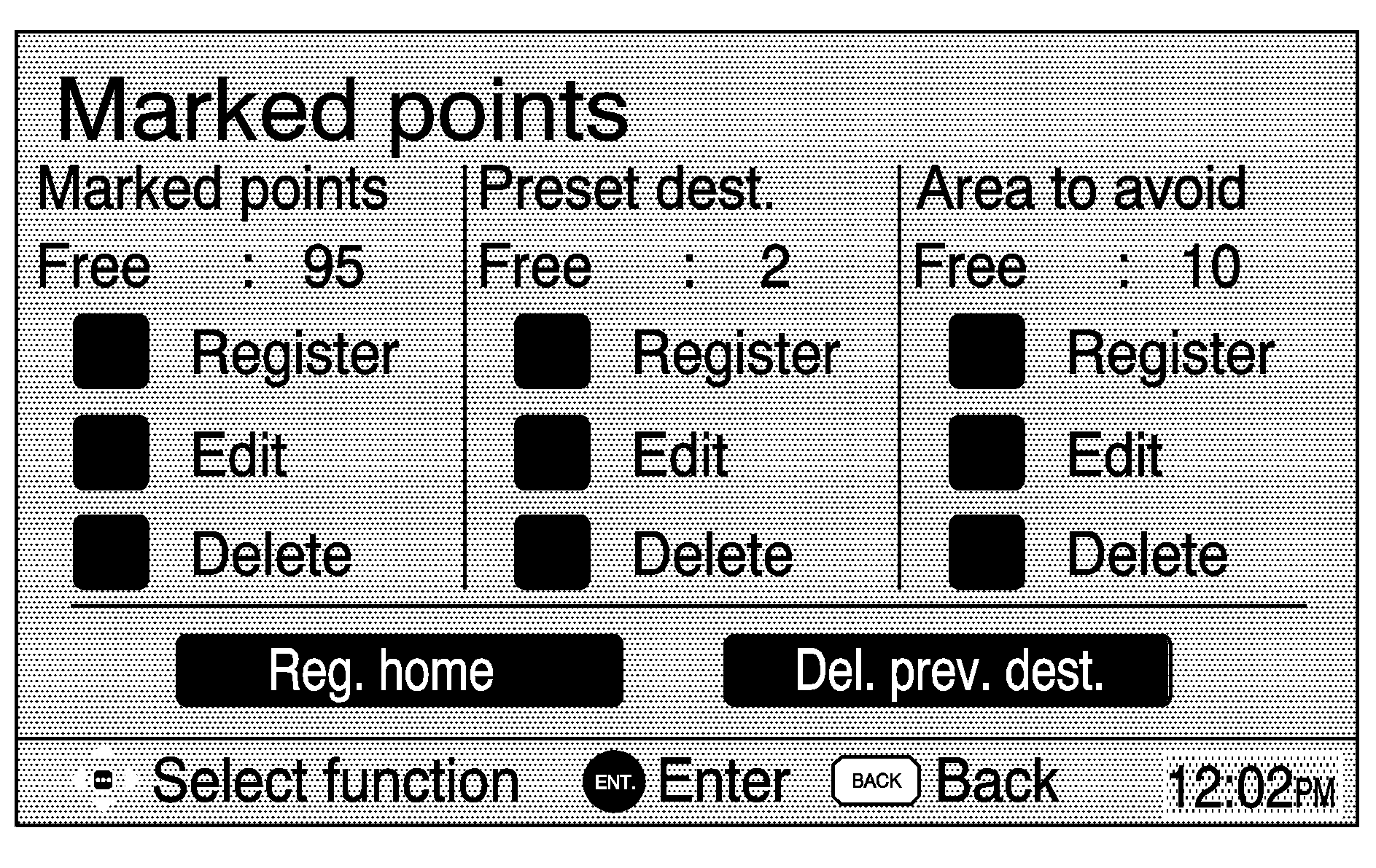
Selecting this function will display the Marked Points menu. This menu contains
options for adding, deleting and editing marked points stored in memory. The name,
location, information and icon may be edited. Five preset destinations as well as
one for Home may be registered or edited. The five preset destinations and Home are
the only destination selections available from the Destination entry screen while
the vehicle is moving. Up to 10 areas to avoid may also be registered.
DEST (Destination)
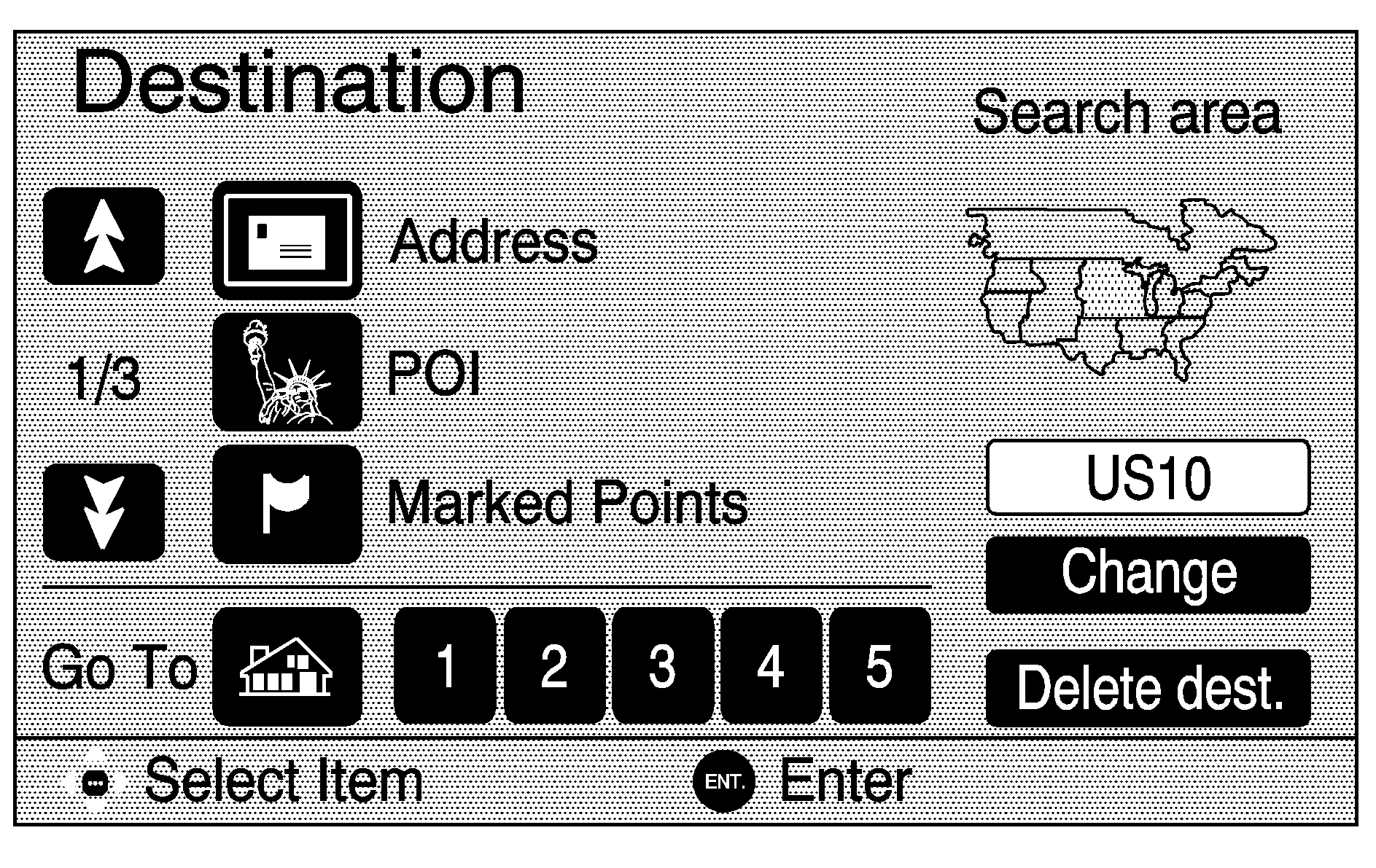
Press this key to display one of the three Destination menus. This menu will
give you more ways to plan a route by entering destination points.
This screen allows you to select the area to be searched for your destination.
Select Change on the screen to display the Search area screen. A map of the United
States and a part of Canada divided into 11 regions will display. Select the
one you want by using the arrows on the control pad and pressing the ENT button to
select it. To select Canada, go to the second page of the Search area screen and select
CAN to display region 11. The Destination menu screen will return automatically.
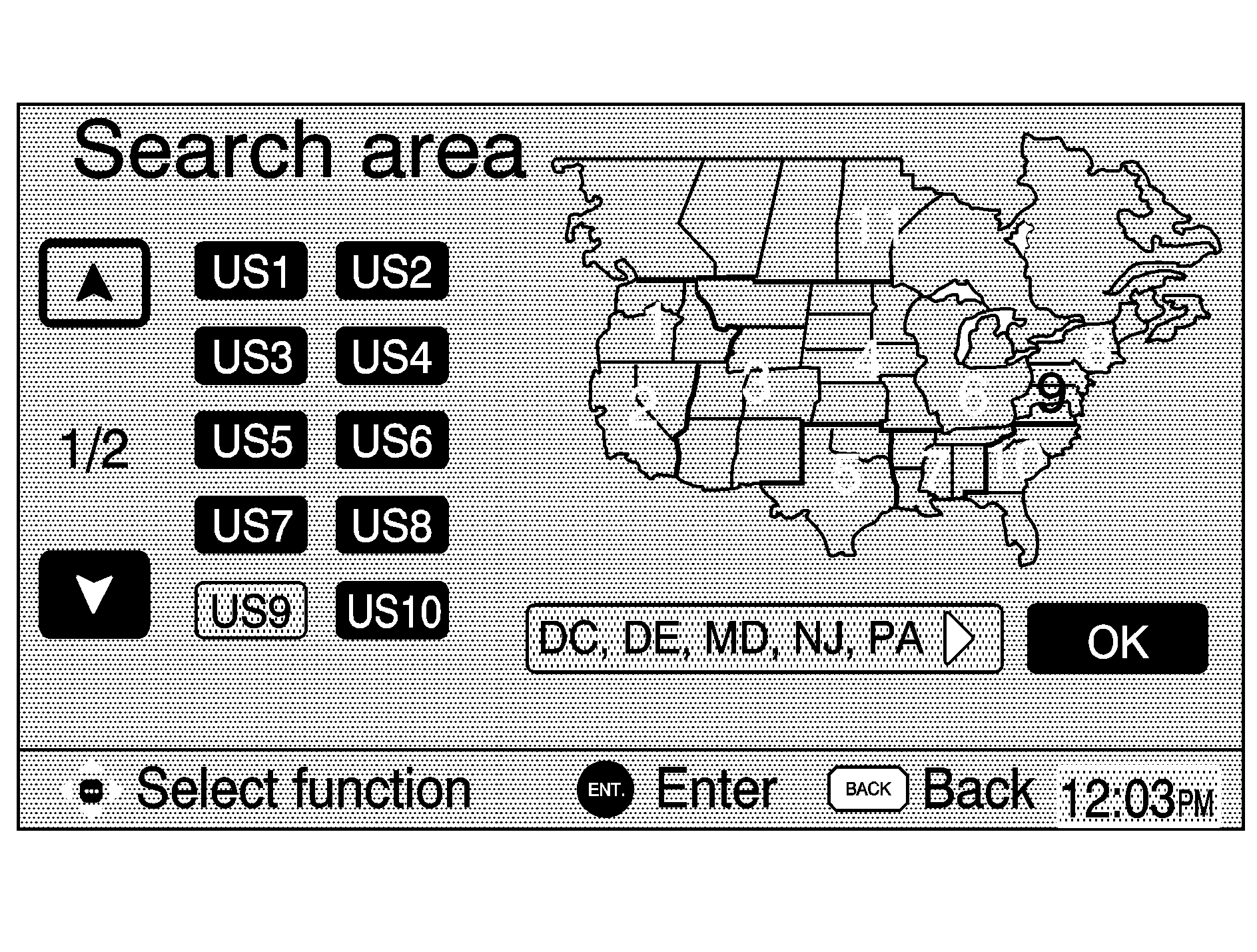
You may choose to enter a destination using one of the items from the list.
Use the control pad to choose from the following destination planning options:
Marked Points Destination Entry: This option allows you to select
a destination by choosing from a list of marked points on the map that were previously
marked. Marked points include up to 100 saved points and five preset destinations.
Selecting marked points from the Destination Entry menu allows you to select any one
of the marked points as the active destination. Marked points can also be sorted by
icon, date saved or alphabetically.
 Previous Destination Entry:
Previous Destination Entry: This option allows you to select
a destination by choosing from a list of previous destinations once entered.
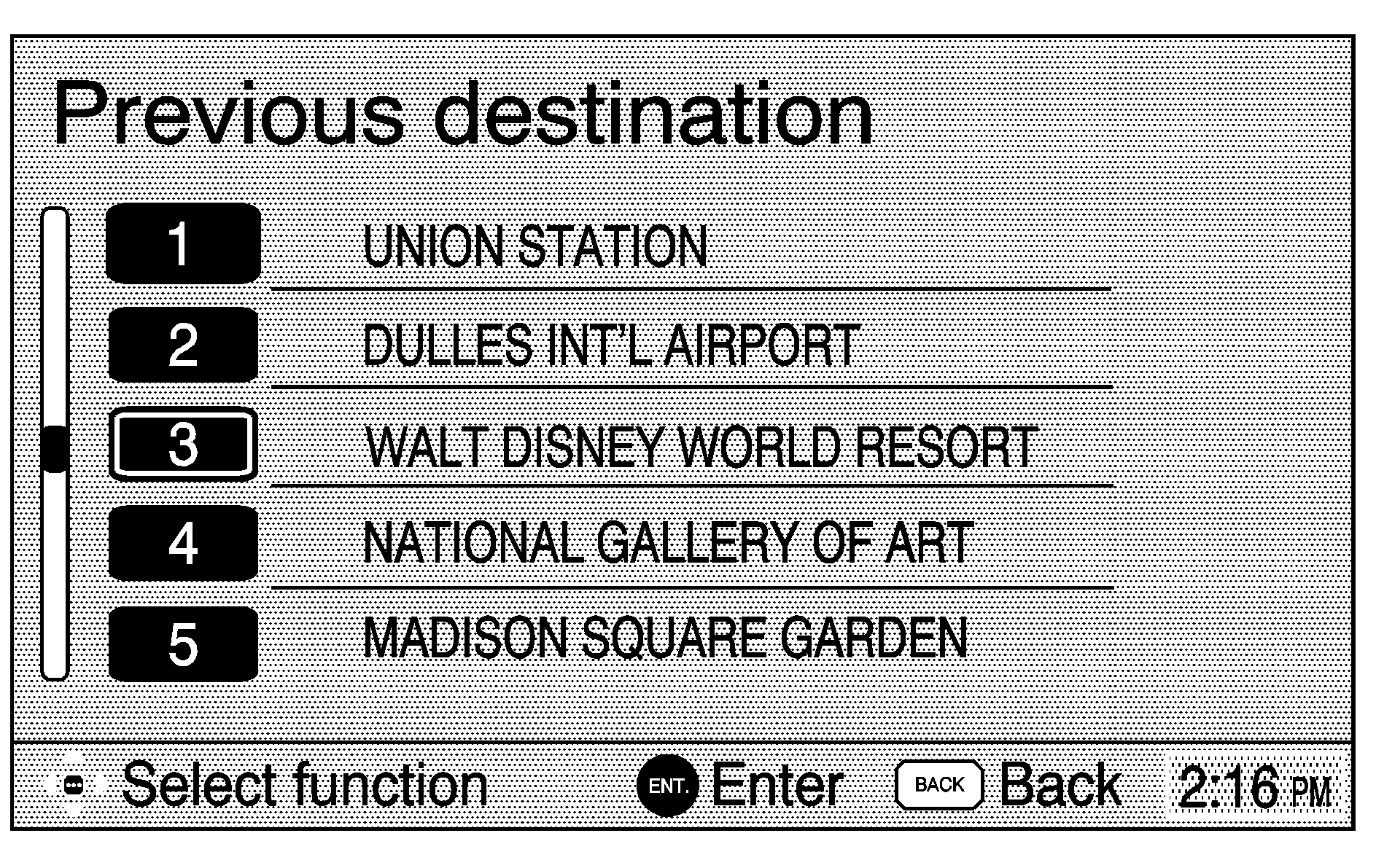 Intersection Destination Entry:
Intersection Destination Entry: This option allows you to select
a destination by inputting the intersecting roads you wish to travel to. When you
select Intersection from the Destination menu, the alpha bar will appear to allow
you to input the name of the first street. This should bring up a list of cities that
have streets with that name. Select the correct city and then the system will allow
you to enter the second street. If you input a street name which does not cross the
first street a message will appear "No corresponding intersections." After
you have entered the second street, the route will be calculated and a voice prompt
will come on to direct you to "Proceed to the highlighted route."
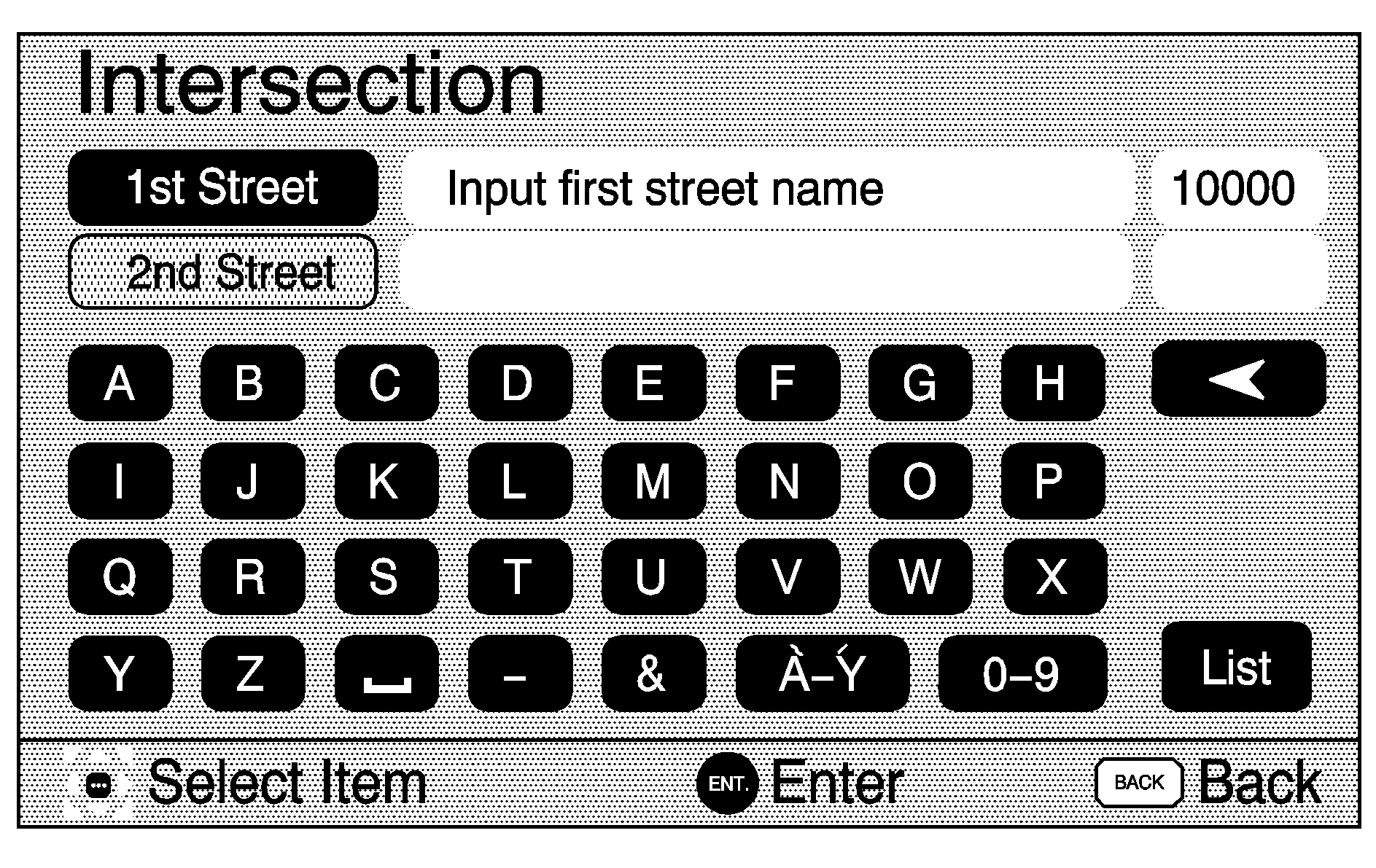 Emergency Destination Entry:
Emergency Destination Entry: This option allows you to select
a destination by choosing from a list of emergency facilities. The list will vary
by area. Selecting Police Station or Hospital will show a list. The order of the list
can be changed to alphabetical order or order of distance.
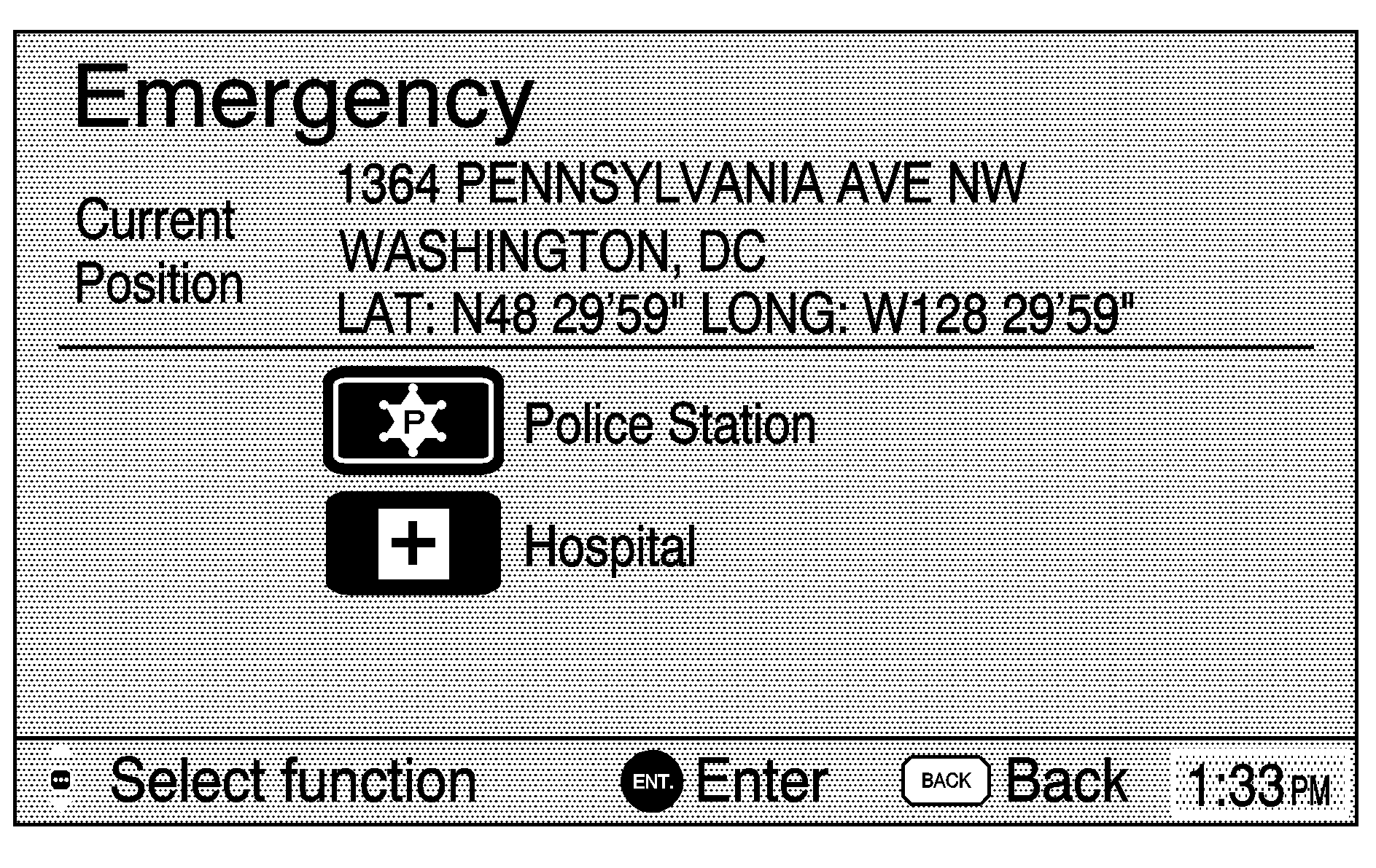 Freeway Entrance/Exit Destination Entry:
Freeway Entrance/Exit Destination Entry: This option allows
you to select a destination by entering a freeway entrance or exit point. Highway
names can be entered through the alpha-numeric keyboard by using the control pad.
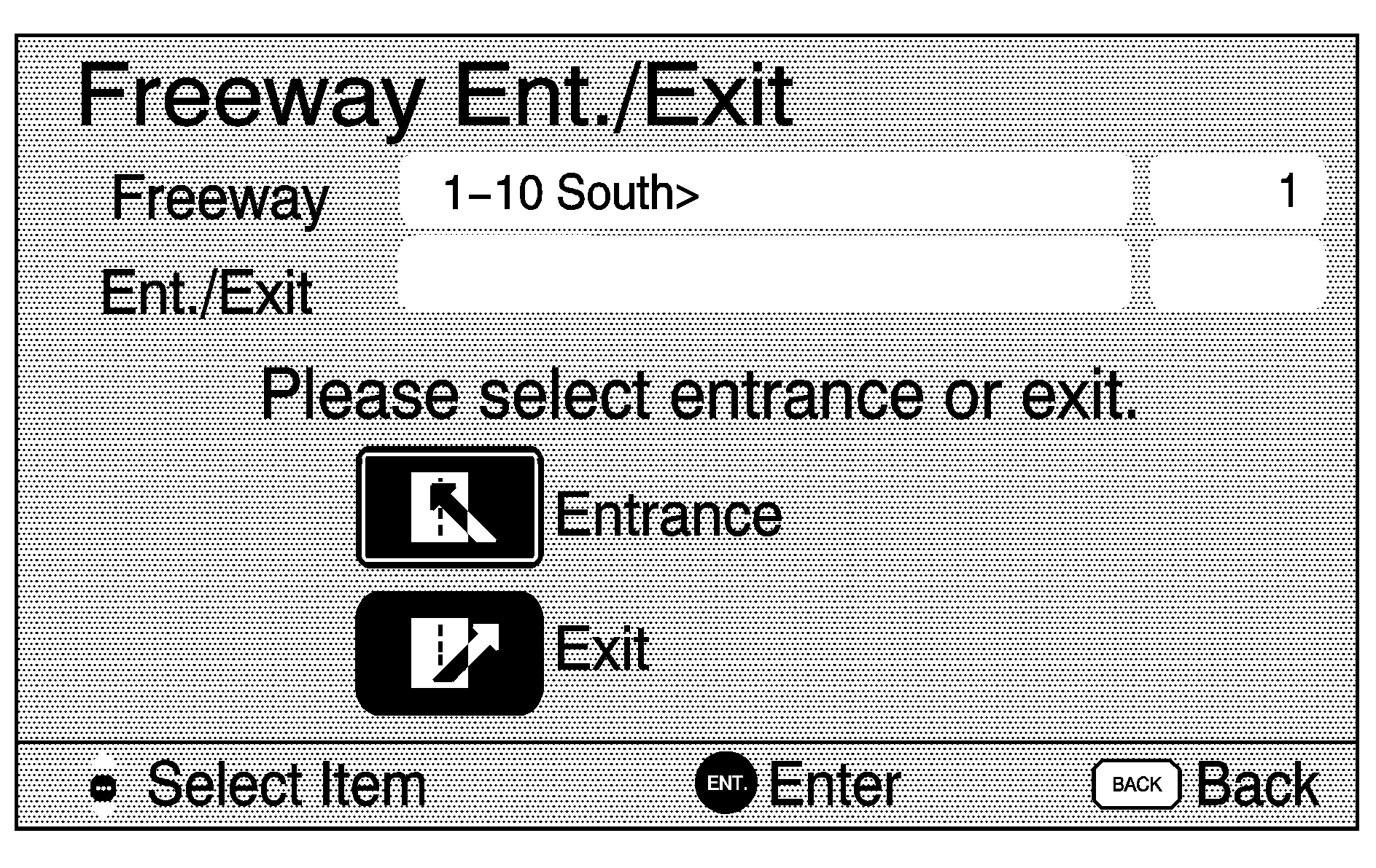 Previous Start Point Destination Entry:
Previous Start Point Destination Entry: This option allows you
to choose to navigate the last known start point in the most recently followed route.
Home Destination Entry: This option allows you to designate
home as the destination. Home can be registered by selecting the MENU key to display
the menu screen and choosing Marked points. Select Reg. home from the Marked points
menu for registering your home.
Map Entry: Selecting Map on the Destination menu allows the
screen to change and displays the map. Use the control pad to scroll across the map
to the desired destination.
Once you have reached the desired destination,
simply press the Enter button and the route will be planned for you. You will also
hear a voice prompt directing you to "Proceed to the highlighted route."
Use the Zoom Out key. See "Zoom Out" under
Using the Navigation System
to view the entire regional map. However,
when you zoom all of the way out and scroll around the map, some parts of the map
will be "missing" because they are not viewable in higher scales.
POI (Points of Interest): This feature allows you to choose
a destination from the points of interest list. Selecting POI from the Destinations
menu brings up the Points of Interest entry menu. The POIs in the database are cross
referenced between Name, Category and City Names. Name and City Names can be entered
through an alpha-numeric keyboard by using the control pad.
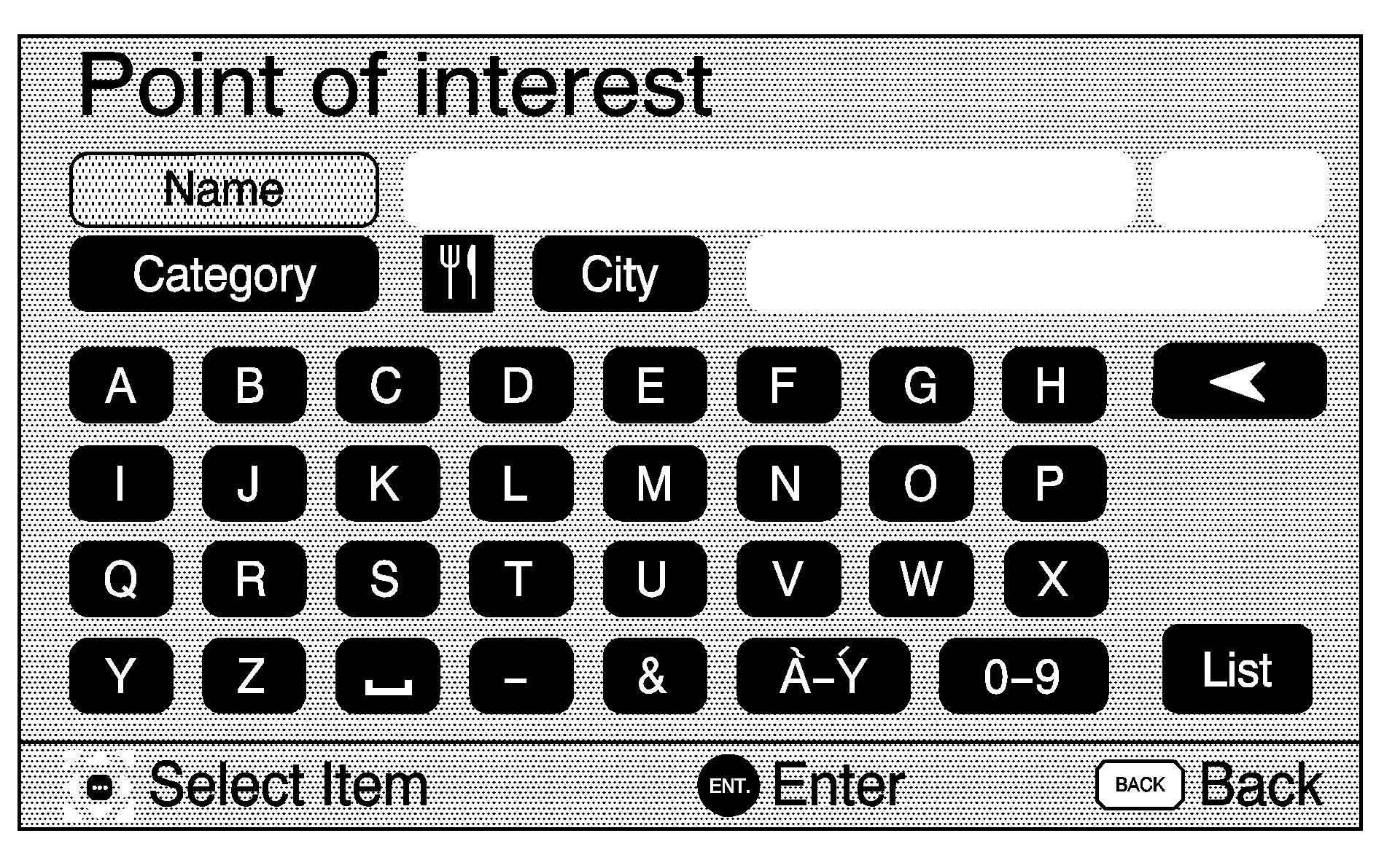
You have three ways to select a point of interest from this screen:
| • | Type in a point of interest by name using the alpha bar. As you type in
a name, the system will search for an available match to your input. Select the correct
point of interest name. |
| • | Select a point of interest by choosing the Category option. Select a category
from the list the system will supply. If the list of available points of interest
for the category selected is still too long, you may need to enter in the name or
city of the point of interest. |
| • | Select the City button and then type in the city you wish to select a
point of interest from. Press the List button to see a list of cities and select the
correct one from it. |
While inputting a point of interest or city name, the List button will become
available. Press the List button to view the list of available name choices or continue
to spell the name to further reduce the list of available items.
Once you select the desired location, the system will show a map of the area
with a symbol marking the destination.
Points of Interest
The following list shows the types of facilities in the DVD database that you
can choose from when using the POI options:
| • | Auto Service & Maintenance |
| • | Convention/Exhibition Center |
If a right or left arrow appears to the left or right of the item name, the
complete name is too long for the display. Use the left or right arrows on the control
pad and the name will scroll to the end or beginning of its name.
The POI for Restaurant is broken down into eight distinct categories. Select
Restaurant from the POI choices. Cuisine Type will then appear as an option.
Address: This method allows you to input and store an address
(without a zip code) by providing the system with a house number, street name or a
city.
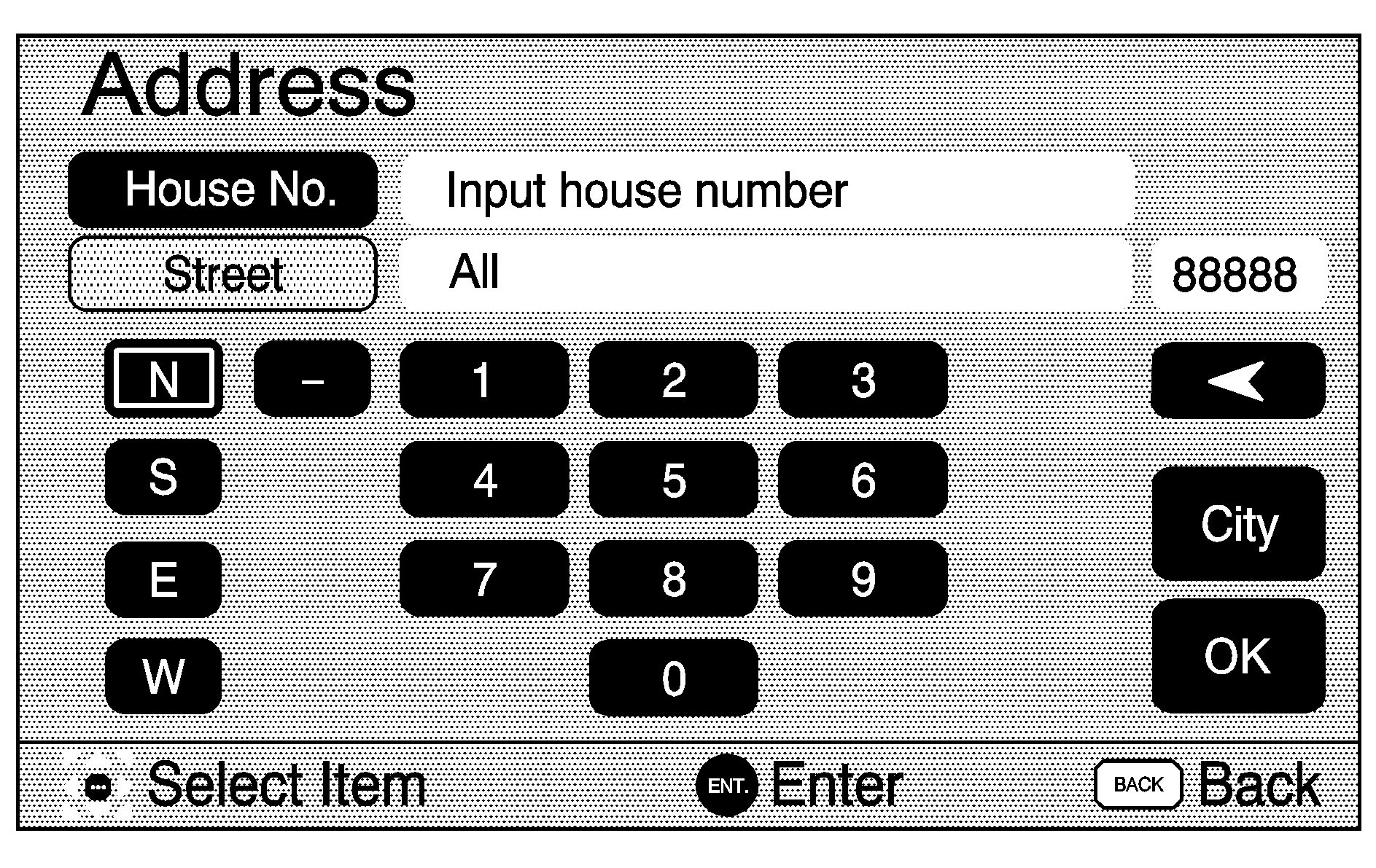
Enter the name
of a street using the alphanumeric bar.
To enter the city name, select City on the Address screen. Select Input City
Name. Enter the name of the city using the alpha bar. Select the desired city name
from the list the system provides. After you have entered the city name, the system
will prompt you to enter the name of the street or will give you a list of street
names to choose from. Enter or select the desired street name.
As information is entered, the system will automatically search for available
names. While inputting a name, the List button will become available. Press the List
button to view the available name choices or continue to spell the name to further
reduce the number of available items.
Enter the house number using the numeric bar. See "Numeric Bar"
under
Using the Navigation System
.
The system will list the house number range that is available for the street.
If you did not select the city name previously, the system may prompt you to
do so using the alpha bar or from a list of names which the system provides. Select
the desired city name.
Press the ENT button on the center of the control pad to set this as your destination.
The system will return to the Enter Destination screen.
Route Overview: Once a destination has been selected the Route
Overview screen is displayed. This screen displays the highlighted route and the following
options:
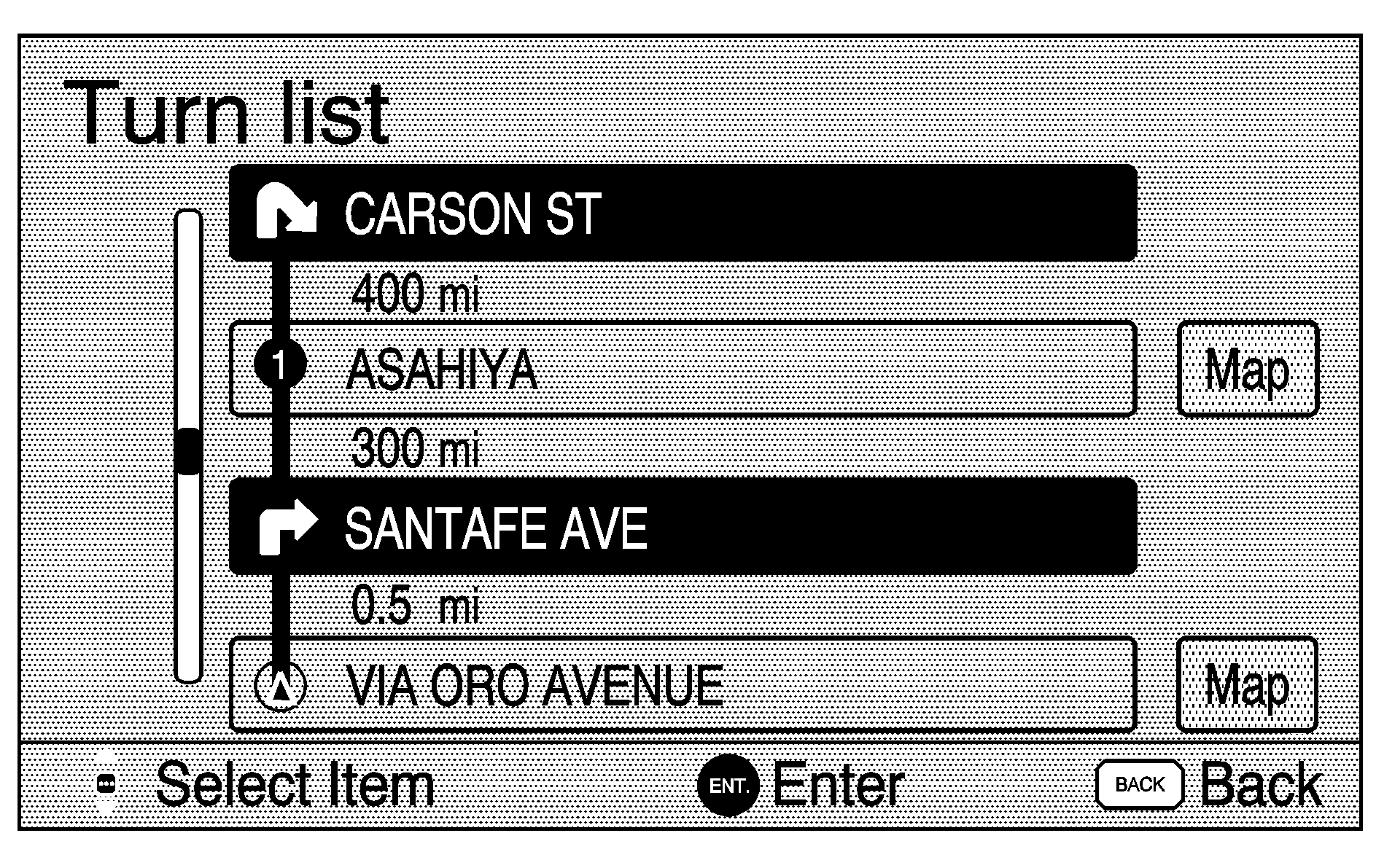
| | This menu shows all legs of the selected route with a mileage value for each.
Press the Map button located to the right of each leg to see a map for that route. |
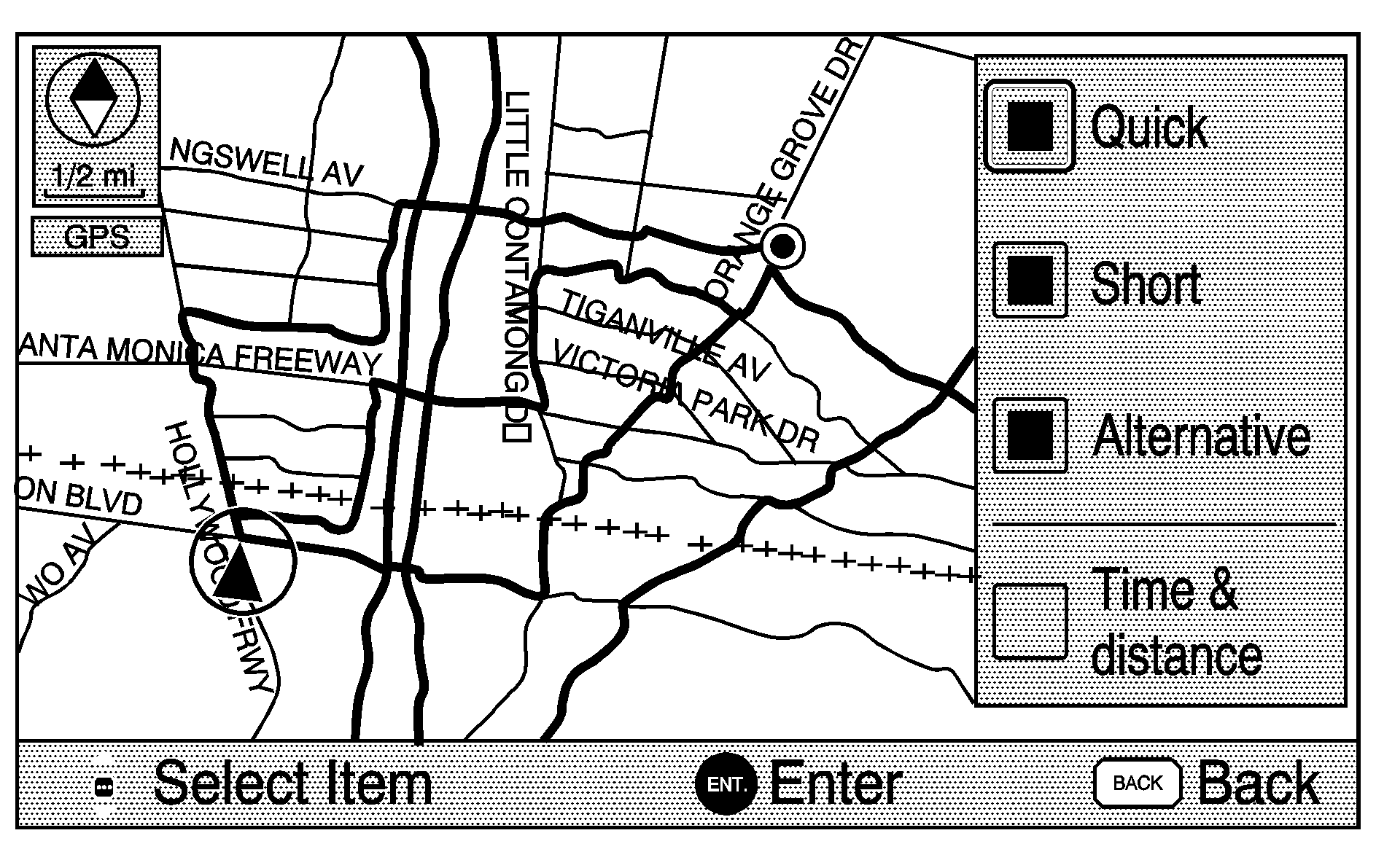
| | This screen will display the map with three highlighted routes with three
different colors; Quick, Short and Alternative. After selecting one of the three routes,
the main navigation screen will be displayed. |
This key always returns you to the previous screen.
Colors on the Screen
When a route has been planned, it will be highlighted on the screen in blue.
Different colors are also used to distinguish between interstate freeways, state
highways, county roads, major street and secondary streets. Highways will be shown
as a thicker line than a general street.















